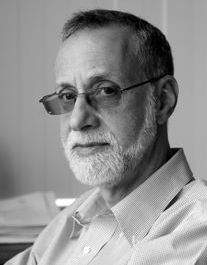Quarterly News -- Spring 2014
Mark Cullen, MD reports to you the quarterly news for Spring
 Mark Cullen, MD
Mark Cullen, MD
I just returned from the annual Stanford Hospital and Clinics retreat in Monterey, beaming with pride at the extraordinary achievements of DGMD, not only in recognition (which abounds!) for our growth in primary care and hospitalist medicine, but by the profound impact our Division’s work is having on the entire institution. It should have been obvious from the invite list alone—no fewer than 7 of the total of 20 guests from the School of Medicine were from DGMD!
So what’s new? For one, the transformation of Stanford Medicine to a primary care based health system—while far from complete—is now recognized at every level of the organization as both inevitable and desirable. The discussion is no longer if we will expand, but where, how fast, and how innovative, the latter notion driven by the Chief Operating Officer’s vision of “The Medical Home 2.0”. Almost every single faculty member present and almost all of the leadership of SHC have moved their primary care to us, and there is little doubt we are the flagship of the ambulatory overhaul. Of course there will be no rest for the weary. Not only will we be expanding north and south, and spawning new care models, but we will be the centerpiece of a new Medicare Advantage program in geriatrics, and will stand as the lead “offering” for large employers on the Peninsula (and in San Diego!) who would like to drive their employees towards getting their care from Stanford Medicine.
In the discussions of the inpatient service at SHC we also stand in a vanguard position, with unblemished appreciation for the role our hospitalist service is playing in improving quality, shortening stays and transforming the patient experience. The melding of our respective strengths in medicine and surgery are now broadly appreciated, and augur just the first steps in radical reorganization of the way we provide the inpatient experience and train our students and residents in acute care medicine. As in the ambulatory context, our GMD faculty will play major team-leading roles going forward.
Perhaps as amazing as the roles we are playing in the transformation of Stanford Medicine practice has been our contribution to the mindset. Where once upon a time the idea of “population health” was considered the domain of the School and University, and held no purchase in the oft-stated vision of “healing one patient at a time”. Now it is considered axiomatic—passé almost!—to recognize that our knowledge of the population and our ability to link personal care with population-based knowledge and insight are the sine qua non of a high functioning health system. And at the very “brain and spinal cord” of such a system it is widely recognized we need a truly “learning health care system” where clinical decisions and care delivery choices are seen not as “definitive” but rather “data” to be continuously evaluated to drive improvement; where clinical trials and observational research within Stanford Medicine (SM) and between SM and other health systems will supplant “expert opinion” and dogma as the foundation for the scientific practice of prevention and clinical care.
It’s a brave new world, and one in which those of us in GMD hold a vital and widely vaunted position. Who amongst you, when you started here, would have, even in your wildest imagination, ever supposed. Not me!
.
